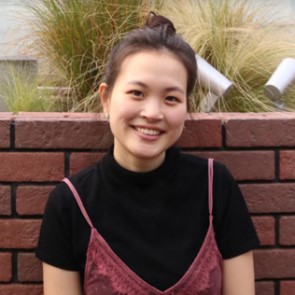
“Visualizing Experiences of Hunger in the Lodz Ghetto”
Professional Background
Christine Liu received a Master’s Degree in Computational Media/Digital Art History from Duke University (United States). During her graduate program, Liu worked with Professor Paul Jaskot on his digital project “Mapping German Construction,” part of The Wired! Lab for Digital Art History & Visual Culture, which explores visual and material culture through critical engagement with various technologies. She also has a Bachelor’s degree in History from the University of California, Berkeley (United States), where her thesis examined the life of Ruth Asawa, memorial making, and Japanese-American internment.
For her Master’s thesis, titled “Mapping and Visualizing Testimonies of Spaces of Confinement: A Digital Analysis of the Kraków Ghetto,” Liu created a map, 3D model, and animation centered in the Krakow ghetto. She interrogated the bounds of digital methodology in visualizing survivor experiences of Holocaust spaces where the slippery nature of capturing moments of placemaking challenges the boundaries of what is possible in visualization and mapping. The project asked: how can place be visualized in the context of its space? In turn, Liu analyzed survivor testimonies as mediated bodies of evidence that can significantly inform understanding of places.
Fellowship Research
Liu was awarded a 2020-2021 Digital Humanities Associate Fellowship at the Jack, Joseph and Morton Mandel Center for Advanced Holocaust Studies and Levine Institute for Holocaust Education for her research project, “Visualizing Experiences of Hunger in the Lodz Ghetto.” While in-residence at the museum, Liu is exploring the topic of hunger and questioning how experiences of hunger might be visualized. Hunger is a visceral sensorial experience and is mentioned in almost every survivor testimony, yet often only briefly referenced in written work. With a focus on the Lodz Ghetto specifically, Liu will draw from the Museum's collection of perpetrator documents, diaries, and survivor testimonies in order to consider the possibilities of visualizing hunger.
